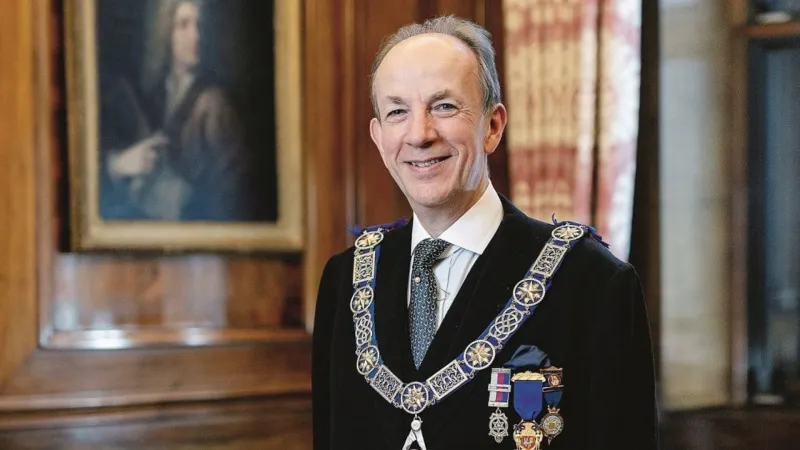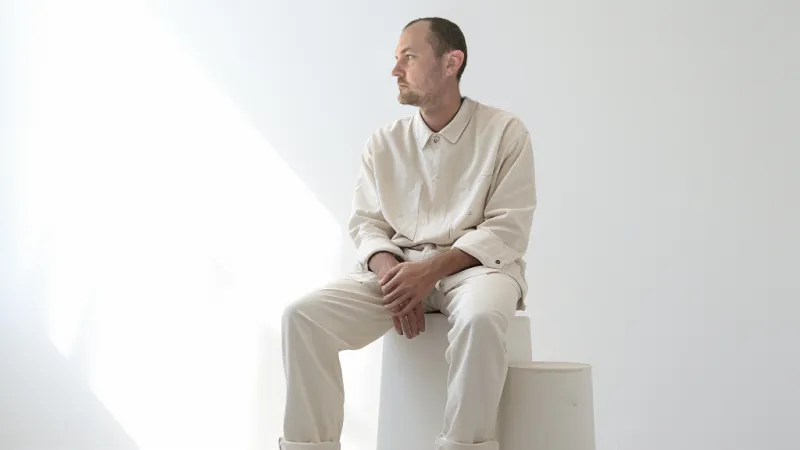
The Museum of Freemasonry was founded as a member’s library in 1838 but grew into a museum and found a permanent home in the present Freemasons’ Hall, which was completed in 1933. The Museum opened its doors to the public in the 1980s to showcase the captivating history of one of the world’s oldest fraternal organisations. Nestled in the bustling heart of London, the Museum houses objects, books and archives offering visitors an intriguing and fascinating glimpse into the journey that has shaped and moulded Freemasonry over the past three centuries.
The Museum welcomed over 40,000 visitors in 2023, maintaining a stellar 4.5 out of 5 visitor satisfaction rating on TripAdvisor. Enhance your visit to the museum and learn more about the rich history of Freemasonry by taking a digital multimedia tour for just £8 per person.
What is the digital tour?
The digital tours are self-guided on a multimedia device with headphones that is similar to a smartphone. It offers an in-depth, self-paced version of a standard guided tour. There is no need to pre-book a digital tour, which are available between 10am and 4pm from the Museum Welcome Area on days when the Museum is open to the public. The digital tours typically take 50-70 minutes to get the most of the collection but, as they are self-guided you can take as long as you like.

There are several versions of the digital tour depending on the availability of different areas of Freemasons’ Hall, which is a working building. All versions include the Museum but when the ceremonial areas of Freemasons’ Hall are not being used, the tours can also include the impressive Grand Temple, Vestibules and Tower Entrance.
Highlights of the digital tour
On the digital tour, you get to discover rare documents and artefacts housed within a spectacular Grade II listed building. You’ll gain insights into Freemasonry's early days, its evolution over three centuries, and its enduring impact on society. Most importantly, you’ll be able to discover Freemasonry and understand what it’s really about.
The tour starts in the Museum’s North Gallery, as you pass under a replica sign of ‘The Goose and Gridiron’ public house in St. Paul’s Churchyard, where in 1717, the first ever meeting of a Grand Lodge took place. Here, you also enter the Museum’s striking permanent exhibition, ’Three Centuries of English Freemasonry‘, which chronicles the intriguing evolution of the organisation. The gallery is divided into three defined sections. The first explores the early history of Freemasonry and the creation two rival Grand Lodges of England but also explores its guiding principles. The second section concentrates on its structure, explaining the differences between Lodges and a Grand Lodge and the third section introduces some of the people who became freemasons, as well as exploring Freemasonry around the globe.

In the Gallery you will discover key artefacts like Anderson's Constitution (1723), and the Articles of Union (1813). Anderson’s Constitutions, published just six years after the first Grand Lodge of England was established, laid out the ethical and legal guidelines governing individual Lodges and the overarching Grand Lodge and helped to introduce Freemasonry to the world. The Articles of Union, signed by two sons of King George III, is the foundation document of the United Grand Lodge of England, bringing together two English Grand Lodges after over fifty years of animosity.

Freemasons have long been famous for wearing aprons and you will see plenty of these on the tour. Beyond their iconic image, Masonic aprons represent a member's unique path through the three degrees within a Lodge. The tour explores their historical significance and contemporary relevance, showcasing some of the most important examples in the collection, including an apron signed by the Prince of Wales, the future King Edward VIII and another belonging to Winston Churchill, the future Prime Minister.
You will also get to see the throne built in 1791 for an earlier Prince of Wales (later King George IV) who was then Grand Master of England. The towering throne, made for ceremonial use, was designed to reflect both the stature and status of the Prince. It has been used in the installation ceremony of every Grand Master since.
The Gallery and tours offers a glimpse into the history of Women's Freemasonry, exploring its French roots and the modern connections between the United Grand Lodge of England and two female-only Grand Lodges. These Grand Lodges have existed for over 100 years, with The Order of Women Freemasons celebrating their centenary in 2008 and The Honourable Fraternity of Ancient Freemasons (also known as Freemasonry for Women) celebrating theirs at Freemasons’ Hall in 2013.
Leaving the North Gallery, the tour brings you to the Library. With an ornate balcony decorated with symbols depicting scrolls, quills, books and musical instruments, the Library is a treasure trove, containing nearly sixty thousand books, pamphlets, periodicals and sheet music. It is also where researchers can access an archive collection of over three kilometres of paper documents, letters, photographs, prints, films and more; all relating to the history of Freemasonry and its associated charities. The Library always houses a temporary exhibition and is the gateway to the Museum’s South Gallery.
So long as it is not being used, the tour now takes you to the ceremonial parts of Freemasons’ Hall. You start at the Memorial Shrine, a special area found within the Vestibules outside the Grand Temple. The Shrine is a bronze casket that houses the Masonic Roll of Honour, a hand-decorated parchment scroll with names of all the English Freemasons who lost their lives in service to their country during the First World War. Above the casket, is an enchanting stained glass Memorial Window, featuring an Angel of Peace. This area also commemorates the Lodges who made a significant contribution to the building of Freemasons’ Hall.

The Grand Temple is your next stop and the highlight of the digital tour. The magnificent room, with a seating capacity of 1700, has a ceiling decorated with moons and starts and a mosaic coving depicting figures from both Biblical and Classical traditions, such as King Solomon and Euclid, as well as references to Masonic ceremonies. The Temple also hosts a massive regal pipe organ installed in 1933, gilt thrones, and mighty bronze doors.
On the occasions when the digital tour cannot take you to the Grand Temple, the device offers an innovative virtual tour of the ceremonial areas. To top it all off, the digital tour also includes a written session exploring the famous films and TV series shot in Freemasons’ Hall. In the meantime, here’s a short list of some blockbusters that have featured the iconic building.
Explore more of the Museum

There is much more to the Museum than what you’ve just seen on the digital tour. The South Gallery is home to a fascinating array of artefacts brimming with symbolism and changing exhibitions. Some highlights include The Sussex Plate, an ornate silver candelabra gifted to the HRH The Duke of Sussex by the United Grand Lodge of England in honour of his 25th year as the Grand Master in 1838. You will also come across a one-of-a-kind porcelain punchbowl, quite possibly the world's largest example of Chinese export porcelain. Crafted in 1813 for the Lodge of True Friendship in Bengal, India, this massive punchbowl holds an impressive nine and a half gallons. After British rule ended in 1947, the bowl returned to England, where the Lodge still gathers today.
Conclusion
Visiting the Museum of Freemasonry and Freemasons’ Hall will leave you with fond memories and learnings. The exquisite architecture, extraordinary displays, and surreal ambience are a recipe for a must-visit experience in London. Make sure to book a tour on your next visit and indulge in the rich history of Freemasonry.


